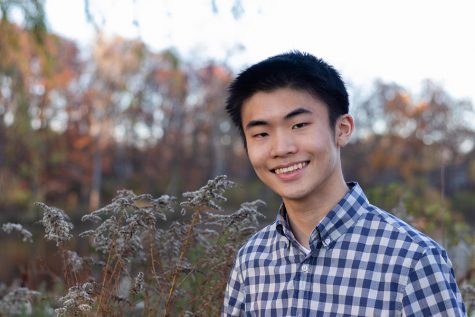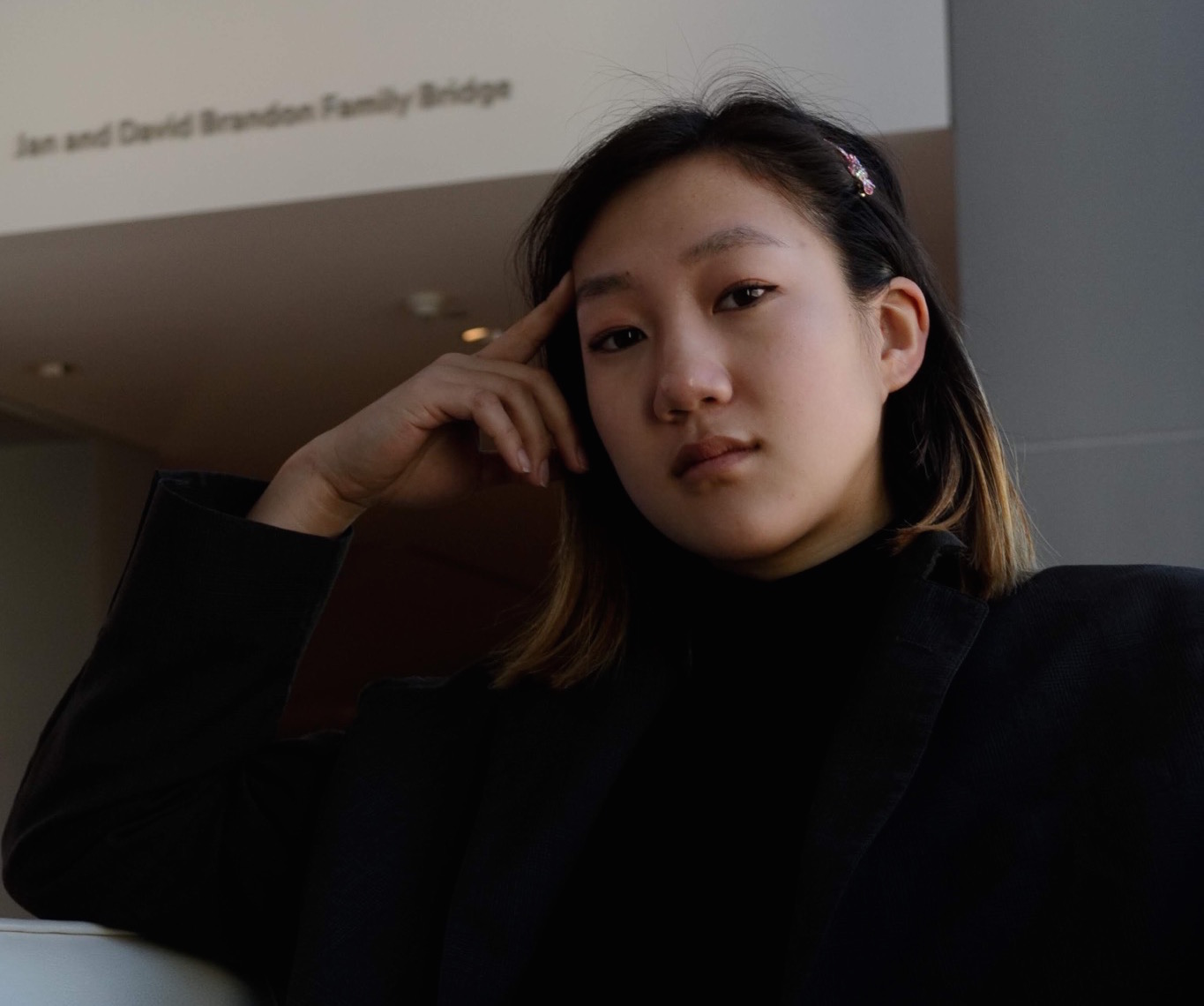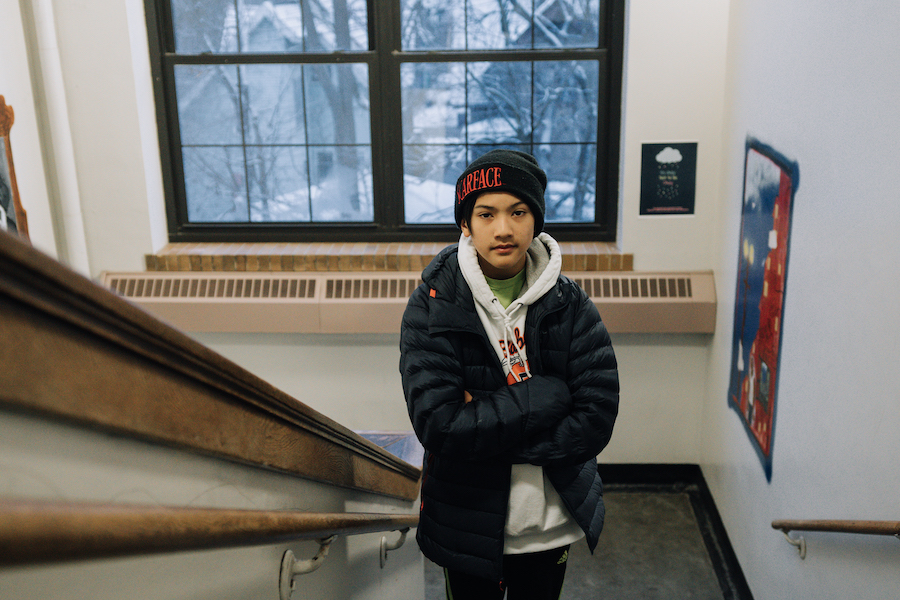
Not Your Model Minority
February 17, 2020
During his final exams at Tappan Middle School, it seemed to CHS freshman Sam Cao that everyone assumed he was good at math simply for being Asian.
Former Community High School (CHS) student and current University of Michigan freshman Gina Liu remembers answering a question right in a math class.
“She only got it right because she’s Asian,” a girl said.
Liu was introduced to the term “model minority,” when she saw a T-shirt stating, “Not Your Model Minority.” At the time, she did not think much of the term or the shirt’s message. Asian Americans are seen as a model minority; a group perceived as having high rates of education, income and low levels of crime. Yet the group had a completely different reputation in the past.
A century ago, the common perception of Asians in the U.S. was as exotic, uneducated laborers, and by 1924, immigration from Asia was banned. After WWII, Chinese Americans promoted their children as obedient, and Japanese Americans seemingly moved on from the internment camps without protest. In a few decades, Asian Americans would go on to have the highest percentage of college degrees and levels of household income. They were seen as quiet, non threatening, successful and self-reliant, and in 1966, William Petersen coined the term model minority in an article titled, “Success Story, Japanese-American Style.”
When Liu first came to CHS, she thought she had distanced herself from the myth by going to a school that she viewed as having less academic pressure.
But when she came here, she realized the myth still manifested itself, just in a new form at a school where Asians had never made up more than 5.6% of the student body during her time there — a number that declined to 2.8% by her senior year.
“I was one of the few that were indirectly chosen to represent our race at the school,” Liu said. “There’s always that expectation of, ‘I am hardworking, smart, I’ve got to put my best face forward and I also have to be chill.’ There was a pressure to be white.”
Liu contrasts her experience at CHS with her time split-enrolling at Pioneer High School (PHS), where she felt that the pressure to succeed academically was the dominant aspect of the myth.
“There’s always the expectation to be challenging yourself and that results from the model minority myth,” Liu said. “I feel it makes you feel cool, and so it makes you feel you’re better. Unfortunately, [the model minority myth] has worked so effectively, Asian Americans feel they need to continue perpetuating these stereotypes and they believe it.”
Failing to meet this expectation has consequences. Asian students who performed poorly on math tests received much fewer points than similarly performing white students. Additionally, the pressure to do well is worsened for fear of letting the whole group down. Moreover, the presence of the “positive” stereotype also leads to higher levels of psychological distress, and worsened Asian students’ attitudes toward seeking help. Since hard work is seen as a driving factor in Asian success, those who underperform are blamed for their own failure.
“There’s the stereotype that all Asian students participate in the music department [and] they’re super passionate about [band or orchestra],” said Earl Bae, a senior at PHS. “Some Asian people do get uncomfortable about that, because some people aren’t as passionate about it and people just assume you’re in band.”
Despite the competition at PHS, Liu feels that it was harder to escape the challenges of the myth at CHS. “It’s easier to escape from academically feeling you didn’t succeed,” Liu said. “But it was harder to escape the pressure of feeling you need to represent your race as chill or cool.”
Academic pressures also play a part in CHS’ low level of Asian enrollment. A friend of Cao’s was not allowed to apply for Community, because his parents wanted him to take AP classes, which CHS does not offer. This plays into the view that CHS is not particularly focused on academics, which Bae sees as a factor in Asians not applying for the schools’ lottery.
“I feel Asian families and Asians in general, they’re very accustomed to the competitive environment,” Bae said. “Like working super hard for school, and the parents have the same exact idea. So all Asians expect, ‘Oh, coming out of middle school, I’m going to go to Skyline, Huron [or] Pioneer to focus on my academics.”
The model minority myth does not only deepen academic pressure for Asian Americans, it ignores the major disparities within their community. According to the Pew Research Center, the top 10 percent of Asian earners make 10.7 times more than the bottom 10 percent, the highest gap of any race. Additionally, the lumping together of all Asian groups overlooks serious gaps between ethnicities; Indian Americans have a median household income of $88,000, but Hmong Americans have a median income of $42,689, compared to the national median of $51,000.
One of the most destructive effects of the model minority myth is the rift it creates between Asian Americans and other minorities, as well as the false equivalency drawn between their experiences that implies they had the same opportunities.
“It’s hard for a lot of people to have empathy for people who they feel have had the same opportunities as them and have screwed it up,” Liu said.
In fact, in the very article that coined the term “model minority,” Petersen praises the apparent self-improvement of Asian American communities as an argument against proposed government funding for other minorities to uplift them. In the ‘60s, conservatives and liberals alike held Asian Americans as a template for other minorities to follow.
While Asians have faced serious discrimination, commentators overlook the centuries of slavery and institutionalized racism faced by African Americans, decreasing discrimination against Asians over the mid-20th Century and revised immigration laws in 1965 prioritizing immigration for highly skilled workers from Asia. By the time Liu’s own parents immigrated from China, both of them already received the equivalent of a medical degree.
Liu feels the two communities are separated; the only time she sees African Americans and Asian Americans together is in political organizing, an activity that the model minority stereotype goes against.
“The model minority myth creates [the view that] since we’re ‘law abiding citizens’, we’re apolitical — we have nothing to complain about.”
“A lot of times the people fighting for political issues are the ones affected by the issues all the time,” Liu said. “When you’re a model minority, it’s like, ‘The system has worked out in my favor, I have nothing to protest against. These people are silly for protesting against it because I succeeded.’”

Liu attended a summer camp at Brown University, where she learned about structural racism towards Black communities. Through that experience, she had the opportunity to learn about racial issues from different perspectives.
While Liu does not think she has any solution to the model minority myth or its effects, she does think that being exposed to the experiences of others can improve perspective. Additionally, Liu believes that the position wealthier Asian Americans are in gives them a chance to expand the discussion around the model minority myth.
“Because we’re on a pedestal, it’s our job to say, ‘this is who it really affects,’” Liu said.
Looking back at the T-shirt with the words, “Not Your Model Minority,” Liu realizes the shirt only focuses on how it affects the person wearing it, without taking into consideration how it has affected others.
“Are people supposed to look at it and say, ‘Oh, she’s rebelling against this stereotype?’” Liu said. “It’s not at all getting to the root of why it’s such a damaging myth. It takes work to contextualize and understand the experiences that are not your own. Not everything has to be about your history.”


